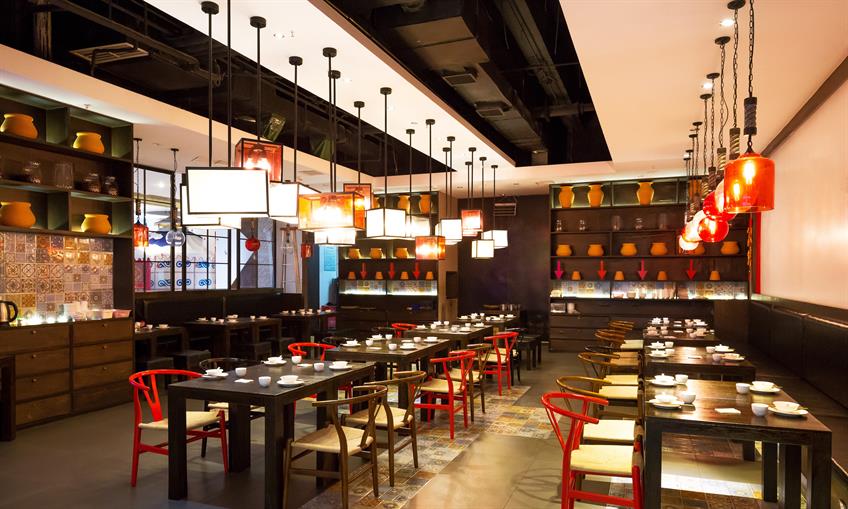Picture this scene: The dining room is full every night. Revenues keep rising, and you’re getting great reviews in the local media. It’s gotten to the point where your host or hostess needs to recommend calling ahead when walk-ins arrive and learn about the hour-long wait.
Your restaurant is finally reaching the pinnacle of success you dreamed about, and the future looks even brighter!
If you intentionally clicked on an article entitled, “How to Franchise Your Restaurant,” you probably don’t have any trouble picturing that scene. No doubt, you’ve either thought long and hard about starting a restaurant or you’ve already put your heart and soul into building that very dream from the ground up.
Whether you’re at that stage right now, or you’re eagerly looking forward to getting there in the near future, the question of how to franchise your restaurant is going to be an important one to consider.
What options are available to you?
If your restaurant takes off, there are a number of different options available to you.
- Assuming you’re making a solid profit and you can entrust the day-to-day management of the restaurant to someone else without jeopardizing that profit, you could potentially retire at this point.
- Or, you could consider selling your restaurant and moving on to something completely different.
But, many owners believe running a restaurant is in the blood. As a current restaurant owner, statistics say you’re more likely considering how you can expand your current operation or get into your next big restaurant venture. If that’s true in your case, there are actually three methods available to you:
- Start a new restaurant from scratch
- Open up a second location of your current restaurant
- Expand into a restaurant chain through franchising
You likely already know what it takes to build a restaurant from the ground up, so it’s important at this stage to ask yourself, am I ready for that level of commitment again? Do I have the resources, ideas, and energy to start over? As you know, starting a brand new restaurant is no easy matter, and you’re not as young as you used to be. Life may have changed dramatically since you opened your existing restaurant, and it may not be easy or even possible to repeat those efforts at this point.
On paper, opening additional locations and expanding your restaurant into a chain that way can seem quick and simple. But a lot of successful restaurant owners have jumped into doing just that, only to find timing and circumstances weren’t right. In some cases, the resulting loss has even harmed the original restaurant.
What about franchising your restaurant?
The third option noted above — growth via franchising — offers the benefits of starting with a successful brand and reputation while avoiding the heavy financial cost and effort required to expand on your own:
For most of us, the word “franchise” is almost synonymous with images of the bright and shiny fast food logos floating over every Main Street, USA we’ve ever driven through. While it’s true that quick-service food establishments provide excellent examples of franchise operations, that doesn’t mean the principles behind successful franchising don’t apply unless running the Fry-o-lator is a full-time position in your kitchen.
The franchise model has proven highly effective for many growing restaurants. The beauty of the arrangement is that other entrepreneurs (your franchisees) will be shouldering the bulk of the investment in terms of money and labor, while you’re only responsible for providing support and direction, and earning a healthy passive income through franchising fees in the process.
It’s important to note, though, that franchising is really only a viable option if your restaurant meets three specific requirements. So, take a look at those requirements as outlined below, and use them to determine whether your restaurant is a good candidate for expansion through franchising.
Is there a lot of independent competition?
The first requirement successful franchises have in common is a competitive — even crowded — marketplace filled with many independent operators.
This well describes the fast food marketplace in the mid-20th century U.S. Across the country, small, independent burger shops, diners, and soda fountains were operating, all doing pretty well on their own.
That’s when Ray Kroc came across two of those independent operators — the McDonald brothers — and realized their popular California burger joint was booming because of their concentration on speed and quality. The McDonald brothers had consciously limited their menu and established uniform recipes and processes, all of which Kroc knew he could duplicate as many times as necessary, simply by opening up an identical restaurant in a different location.
That’s how McDonald’s — one of the largest fast food franchise operations in the world — was born.
The fact that many independent operators are successfully staying in business in the market proves it’s a viable business opportunity with a significant supply of willing customers. In nearly every population center in the country, all restaurants operate in this kind of optimally competitive atmosphere.
Now, take a moment to consider what the average customer in that kind of environment can appreciate about a franchise location:
- Consistency of quality
- Consistency of selection
- Consistency of price
- Consistency of service
With nothing but independent restaurants to choose from, all the customers wanting dinner in the area are forced to roll the dice each time they choose a new place to eat. There’s no way to adequately compare whether their experience is going to be better, the same, or worse than it was at the last place they visited. If you chose to open a brand-new restaurant, you’re only compounding that issue.
On the other hand, a franchise operation alleviates that uncertainty because it promises the same experience at every location. Since you wouldn’t be considering expanding if that experience wasn’t excellent, customers will naturally be drawn to consistency over uncertainty.
Is your restaurant run on duplicatable systems?
Just launching different locations with the same name and color scheme isn’t enough, though. Successful franchises are built on easily duplicatable systems that have provided a solid foundation for consistent success. What does that mean?
Let’s look again at Ray Kroc and McDonald’s:
The secret to the success of the original McDonald’s restaurant was an assembly line-style food preparation system (which the McDonald brothers called the “Speedee Service System”). It was comprised of a very limited menu (which eliminated delays caused by too many choices,) and a highly recognizable brand, which McDonald’s still exploits to this day.
After buying out the McDonald brothers, Kroc applied their highly-efficient production system and visual branding to a host of franchise locations that sprung up swiftly across the country. Kroc’s entire strategy was about the systems and their ability to create consistency in quality, taste, and price.
Additionally, Ray Kroc quickly discovered that the franchise model allowed McDonald’s to control a greater economy of scale among suppliers. As a result, each new location was a little more profitable than the last. Today, there are nearly 37,000 McDonald’s locations serving over 68 million customers around the world every single day.
Can you commit to providing adequate training and support?
Even the best, most duplicatable food preparation and delivery system isn’t going to automatically provide a successful franchise operation if new owners and employees have to struggle to learn how to make it work.
The third essential ingredient of a successful franchise is adequate training and support from the parent company.
The tens of thousands of entrepreneurs who became McDonald’s franchisees over the last 60 years generally agree: the system is such a compelling buy because it’s set up to be a turnkey operation from day one. Every franchisee receives everything they need:
- Supplier contact information
- Order forms
- Step-by-step process checklists
- Even training for the kid who flips the burgers.
All they’re required to do is step into the ownership role and keep that well-oiled machine moving forward.
If you’re able to provide similar training and support for franchise owners interested in helping your restaurant expand, you can expect growth similar to the international fast food giant.
So, could your restaurant become a franchise?
Ask yourself:
- Am I currently operating in a highly competitive market where most of my competitors are independent?
- Does my restaurant run on a successful, easily duplicatable system? (And if not, can I get it there?)
- Can I provide training and support to help others follow my system so they can get up and running quickly and easily?
If you can honestly answer “yes” to these questions, you’ve probably just found the perfect growth strategy as a food service entrepreneur. Why not explore Why not explore franchising as a reasonable growth strategy for your restaurant?



